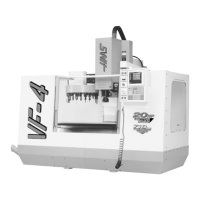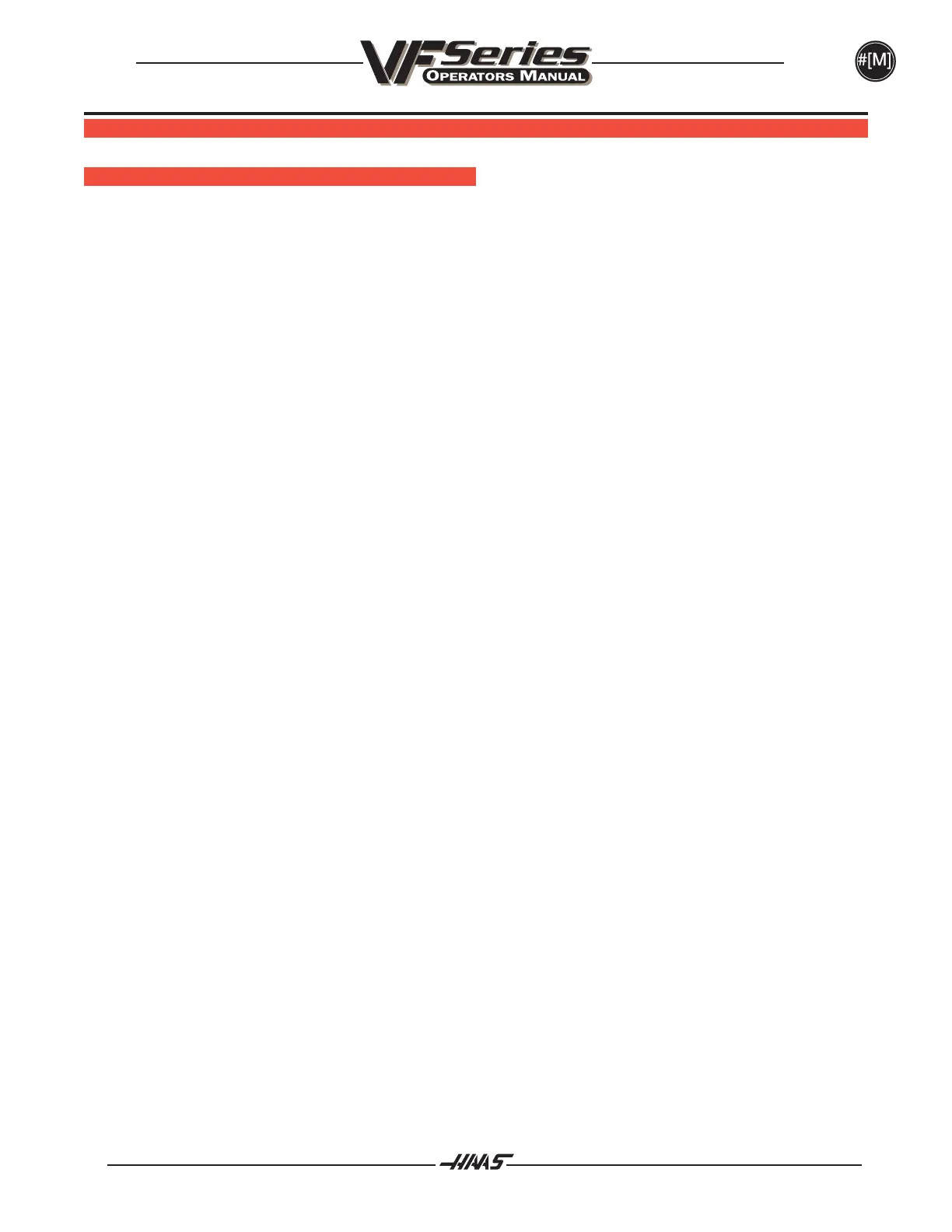35996-8000
MACROS
June 1999
11.3 MACROS
INTRODUCTION
This control function is optional. If you would like further information on installing this feature please call Haas
Automation or your dealer for more information.
This is an introduction to macros as implemented on the HAAS CNC controls. MACROS adds capabilities and
flexibility to standard G-code programming that allow the programmer to better define a tool path in a quicker
and more natural way. With few exceptions, MACROS, as implemented on the HAAS controls, is compatible
with FANUC 10M and 15M controls. Macro features not included in the current release are listed at the end of
this section. Programmers already familiar with macro programming will want to review this section in order to
avoid unnecessary work.
In traditional CNC programming, a program consists of subroutines that CANNOT be changed or altered except
by editing individual values with an editor. MACROS allows the capability to program subroutines where the tool
path or location of the tool path is changed, depending on the values contained within variables set by the
programmer. These variables can be passed to the subroutine as parameters, or the values can reside in what
are called global variables.
What this all means is that a programmer can create a collection of subroutines that have been fully debugged.
These programs can be used as high level tools that can enhance programmer and machinist productivity.
MACROS is not intended to replace modern CAD/CAM software, but it can and has improved machine produc-
tivity for those who use it.
Here are a few examples of the applications for MACROS. Rather than give macro code here, we will outline
the general applications that MACROS can be used for.
Tools For Immediate, On-Table Fixturing
Many setup procedures can be semi-automated to assist the machinist. Tools can be reserved for immediate
situations that were not anticipated during tool design. For instance, suppose a company uses a standard
clamp with a standard bolt hole pattern. If it is discovered, after setup, that a fixture will need an additional
clamp and if macro subroutine 2000 has been programmed for drilling the bolt pattern of the clamp, then the
following two-step procedure is all that is needed for adding the clamp to the fixture.
1) Determine X, Y, and Z coordinates and angle where the clamp is to be placed by jogging the
machine to the proposed clamp position and reading the position coordinates from the machine
display.
2) Execute the following command in MDI mode:
G65 P2000 X??? Y??? Z??? A??? ;
where ??? are the values determined in Step 1.
Here, macro 2000 (not shown) takes care of all the work since it was designed to drill the clamp bolt hole
pattern at the specified angle of A. Essentially, the machinist has created his own custom canned cycle.

